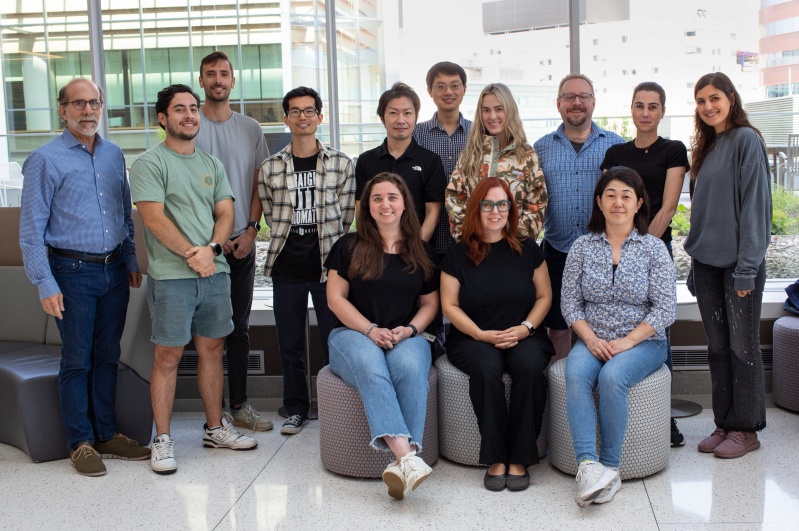
Our Mission
The goal of our laboratory is to understand ways that genes are regulated to allow one type of cell to change into another type of cell. Such “cell type control” occurs in embryonic development and tissue regeneration, when embryo or adult stem cells become specialized for tissue function. Understanding cell type control is crucial to being able to generate new cells at will for therapeutics and for generating experimental models to unveil the basis of, and cures for, human disease.
Discoveries
We discovered special gene regulatory proteins that we called “pioneer factors,” which are among the first to bind to genes in embryonic development. We found that pioneer factors can recognize silent gene target sequences based on their biochemical properties of binding to nucleosomes, which are protein complexes with DNA that help package vast amounts of DNA into each cell. Pioneer factors engage other proteins to loosen the local chromosomal structure, enabling gene activation or endowing the competence for genes to be activated at a later developmental stage. Pioneer factors are now being found in diverse contexts by other research groups, including in reprogramming cell fate and in enabling gene regulation by hormones in cancer cells.
We found that unspecialized stem cells in the embryo can contain a “pre-pattern” by which genes for different tissues are marked differently from one another, prior to the commitment of the stem cells to liver or pancreas fates. We also identified a dynamic signaling network that extends from the external cell environment to gene regulatory proteins and induces the decision to make liver or pancreas cells in the embryo. We further found that at the onset of tissue development, early stage liver and pancreas progenitors interact with blood vessels cells, which promotes the maturation of the liver and pancreas into proper tissues. The information from these studies is now being used by diverse research groups to generate vascularized mini-livers and pancreatic insulin-producing cells from stem cells, for diabetics.
Our group has focused on the ability of pioneer factors to convert one specialized type of cell into another. Such conversions, whether occurring in the laboratory or in human pathologies, are rare and highly inefficient. We discovered a chromosomal molecular barrier to the cell conversion process that is revealing information about the ways that cells stably maintain their specialized functions. The molecular barrier consists of heterochromatin, which is a subtype of chromosomal segments that compact the DNA so much that the underlying genes are generally resistant to activation. By perturbing the heterochromatin barrier, we can enhance the conversion of one cell type into another. We anticipate that this approach will facilitate cell type conversions in various biomedical contexts.
During tissue growth or regeneration, individual cells divide into two cells. When a cell divides, both daughter cells must recapitulate the specialized functions of the parent cell. Yet during the process of cell division, the chromosomes condense so much that the genes nearly shut off their activity, raising the question how the genes are fully activated after cell division, when the cells “wake up.” We discovered that genes are not completely shut off during cell division. Hence, we are focusing on how genes retain residual activity and whether such residual activity confers memory of the cell state prior to cell division.
Our laboratory has used stem cell technology to develop an experimental model to understand and track early stages of human pancreatic cancer. We created a stem cell-like line from human pancreatic cancer cells that can recapitulate the early stages of disease progression. This allowed us to identify a regulatory network that is activated in the early stages of pancreatic cancer. We used the system to discover secreted and released proteins from the early-stage cancer cells, along with studying proteins in the blood of early-stage patients with pancreatic cancer that we are testing as new diagnostics in the clinic. The studies are in collaboration with scientists and clinicians at Penn Medicine, the Mayo Clinic (MN), and as part of the Pancreatic Cancer Detection Consortium at the National Cancer Institute of the NIH.

